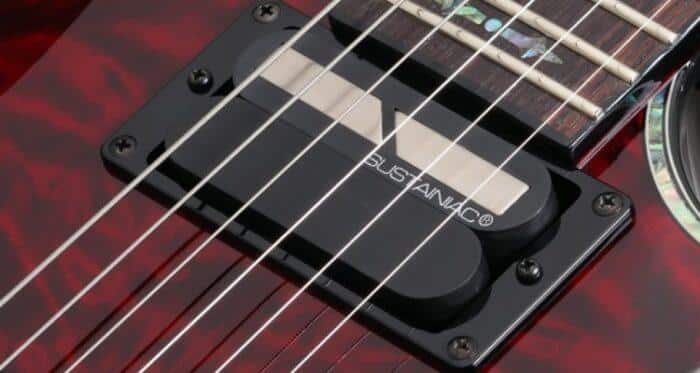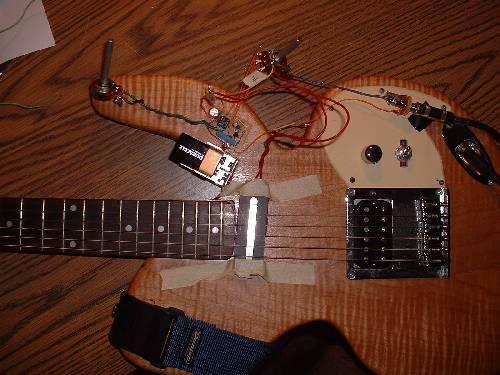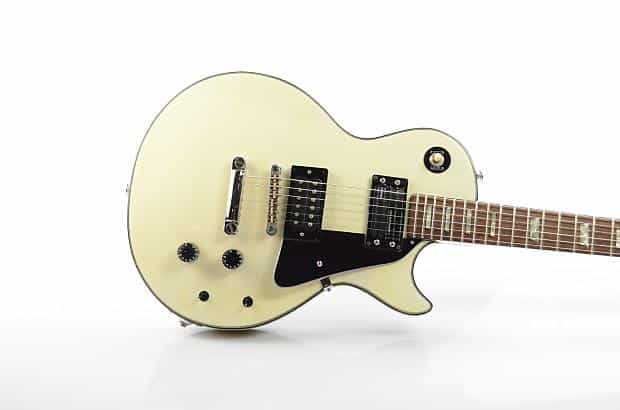The first time I heard a note, seemingly held by unseen hands and floated in air indefinitely, my world as a guitar player changed forever. That single, eternal tone—so enchanting, so mesmerizing—made me realize the endless possibilities of sonic exploration. It made me realize the power of guitar sustainer systems.
This is David Garcia. Over the course of my multi-year exploration into the realm of stringed instruments’ acoustics, I’ve understood one thing with absolute certainty: the power of sustain, essentially infinite sustain, is a game changer. Yet, for many, the world of guitar sustainers remains shrouded in mystery, its immense potential often overlooked or misunderstood.
In this comprehensive guide, I hope to reveal the beauty and versatility inherent in these intriguing systems. We’ll demystify sustainers, delve into their many types, and discuss their installation. We’ll even uncover some lesser-known tricks to achieve that elusive, perfect sustain. By the end, you’ll have gained a rich understanding that empowers you to master your guitar’s sustain and exploit it to its fullest potential.
Come, embark with me on this journey to the heart of guitar sustainers. It promises to be a fascinating ride, one filled with profound discoveries, sonic adventures, and a newfound appreciation for the power of sustain. The world of infinite sustain awaits you.
Understanding Guitar Sustainer Systems
Types of Sustainer Systems

Diving into our exploration of sustainer systems, let’s dissect the different types available. Over time, I’m fortunate to have experimented with a broad range, bearing witness to the distinct characteristics each brings to the table.
First, we encounter the Sustaniac pickup, a prevalent choice among aficionados of sustained notes and harmonics. This system works by vibrating the strings magnetically, maintaining an endless note for as long as desired. My own hands-on experience with the Sustaniac pickup highlighted its capacity to produce long, uninterrupted tones, adding a unique touch to my guitar solos.
Next, let’s talk about the magnetic sustainer. Similar to the Sustaniac, it uses electromagnetic feedback to keep the strings vibrating. However, it is more versatile, allowing for the manipulation of individual strings. I can personally attest that the magnetic sustainer opens avenues for creativity, permitting the sculpting of music quite distinctively.
Lastly, we have the polyphonic sustainer. An innovative piece of technology, it offers the ability to sustain notes polyphonically—that is, several at once. What I remember most from my time with a polyphonic sustainer was the richness it added to my chords, curating an impactful resonance.
These are just few examples in a vast ocean of variety. Each type of sustainer system distinctively contributes to our understanding of guitar sustainers, bringing along a unique edge. Probing their depths and exploring their bounds has given me fascinating insights into the dynamic world of guitar sustain.
Moving onward, we will delve into how exactly to install these systems. Here, I’ll share some valuable DIY tips from my own journey.
Installation and DIY Guide

Throughout my years of tinkering, rebuilding, and performing with guitars, one of the most transformative technologies I’ve integrated is a sustainer system. It truly catapults your guitar’s potential into an entirely different realm. And as an engineer with hands-on experience in instrument construction, I’m equipped to guide you through this exhilarating do-it-yourself project. Delving into DIY guitar electronics can initially sound daunting, but rest assured, with the right sustainer kit and guidance it becomes an accessible pursuit.
Before we delve into the nitty-gritty of sustainer installation, let’s make sure we’re on the same scale. A sustainer system enhances your guitar’s capacity to hold a note or a chord for an extended period or even indefinitely, making it a sustain powerhouse. It’s a tool that can truly help you improvise, experiment, and expand your musical expressions. So, if you’re ready to break the tonal barriers and achieve those sweet, sustained notes, you’re at the right spot!
Ready to transform your guitar into a sustain powerhouse? Let’s dive into the DIY installation guide.
For a smooth and successful sustainer system DIY installation, you’ll need patience, precision, a bit of engineering skill, and ample knowledge of your guitar’s structure. Let’s start by discussing the key steps involved in the process. The following steps are a general guide, but remember, the specifics depend on the type of sustainer system you’re installing and the guitar you’re operating on.
First, you’ll start by removing the guitar’s old pickguard and electronics. This is a crucial moment to really get to understand and respect the anatomy of your beloved instrument. After removing these components, we’ll move on to the sustainer kit installation. Here, investing in a high-quality sustainer system kit pays off, as they often come with comprehensive instructions that make the process more manageable. As you sort through the wires, potentiometers, and switches, remember, this task requires diligence, not haste.
Next, you’ll route and solder the new components into your guitar. If you’ve ever done anything like adding new pickups or altering the wiring, this will already feel familiar. During this step, pay attention to grounding wires, as they will ensure you get a crisp, clean sound free of any annoying hums or buzzes. Once everything is soldered and secure, make sure to meticulously test the system to confirm it’s working as it should.
In the final stage of operation, restring the guitar and get ready to adjust and set up the sustainer system. This might mean calibrating the intensity of sustain or tweaking the balance between different pickups. It’s a process of tuning it to your preferences, and the outcome is immensely gratifying.
There’s no doubt that the initial plunge into DIY guitar electronics may seem a little intimidating, yet it delivers an unparalleled sense of achievement. To see, hear, and feel the change that you’ve brought about in your guitar- there’s nothing quite like it!
I can confidently proclaim that installing a sustainer system on your guitar is worth every minute spent learning and working on it. The boost in your instrument’s versatility is a game-changer. With diligence, patience, and enthusiasm, you can tackle this DIY project and come out victorious at the end, with a guitar that can sustain as lovely and as long as you desire.
So, are you ready to amplify your guitar-playing experience with a custom-installed sustainer system? Welcome to the captivating world of DIY guitar electronics, where your creativity, skill, and passion all come together to transform what’s possible with your guitar.
Enhancements and Tricks for Better Sustain

Investing in a quality sustainer system for your guitar is a worthy investment. It has the potential to entirely redefine your sound, taking it to next levels of tonal sophistication. That being said, the quest for perfect sustain doesn’t stop there. Having tinkered, tested, and trailed my way through countless sustain enhancing gear over the years, I can tell you that the road to great sustain isn’t always a straight one.
A world of varying sustain effects and guitar sustain tricks lies beyond a sustainer system. Sometimes, it’s about getting back to the basics, tweaking not just the gear, but how you play. Other times, a seemingly small adjustment in your gear could unlock an entirely new dimension of sustain.
Let’s move beyond a sustainer system. What other tricks can significantly enhance the sustain and richness of your guitar’s sound? I’m sure you’re eager to find out!
One of the simplest and most impactful ways to enhance your sustain is through careful control of your playing dynamics. Avoiding unnecessary palm muting and focusing on your pick attack can significantly impact the length and quality of your sustain. Remember, it’s not just about the gear you have, but how you use it.
Another trick is the use of compression pedals, a piece of sustain enhancing gear. Compression pedals help in maintaining your guitar’s loudness, ensuring the softer notes are emboldened while containing the volumes of harsher ones. This smoothens out your overall tone and helps prolong the sustain, breathing life into your individual notes and chords.
Your guitar strings also play a crucial role in your sustain. Lower gauge strings tend to have more mass, which in turn increases sustain. However, keep in mind that these strings are harder to play and can affect your playing speed. Add a bit of overdrive or distortion to the mix, and the sustain enhancing gear and you’ll see marked improvements in the sustained sound.
It’s essential, however, to not be too taken away with modifications and accessories. They are aids, not definitive solutions. The real magic comes from understanding your guitar, playing techniques, and learning to mold the two in perfect harmony.
In my personal journey with sustain, no two guitars have been exactly the same. Each comes with its own personality, a unique voice that needs to be discovered and mastered. The journey toward perfect guitar sustain is one of exploration and discipline. And the discoveries along the way – they’re what make this journey truly remarkable.
Keep these insights in mind as we proceed to the next part of this article, where we dive into detailed reviews and user experiences. This will further illuminate how diverse and personalized the world of guitar sustain can be, and how you, too, can achieve it.
Reviews and User Experiences
Top Sustainer Brands and Models

Delving into the terrain of top sustainer brands, my experiences reiterate the prominence of the Sustainiac and Fernandes sustainer models. In countless collaborations with my fellow luthiers and in my personal use of various products, these brands have proven their worth in the industry.
First, the Sustainiac. What makes this brand exceptional is how it delivers infinite sustain on any fret and any string. Its ability to provide clear, balanced sustain and the option to switch between harmonic modes adds versatility for creative musical explorations. While the installation can be challenging, the final payoff is incredibly rewarding.
Next, the Fernandes sustainer. This powerhouse combines a driver and a pickup into a compact system. It excels in offering a broad range of tonal possibilities, from a transparent clean to a thickly distorted sustain. I’ve found its user-friendly installation and easy integration into existing setups to make it a reliable choice for players looking to extend their sustain capabilities.
From my perspective, these brands contribute substantially to the sustain accumulator category. Both have reinforced their credibility through efficient performance and versatility, providing guitarists with innovative tools to elevate their playing technique. In the following sections, I’ll dive deeper into the nuances of these sustainer systems, exploring their role in enhancing your guitar’s sustain.
FAQs
What is guitar sustain?
How can a guitar sustainer system help in mastering guitar sustain?
What are some popular types of guitar sustainer systems?
What are some factors to consider when choosing a guitar sustainer system?
Conclusion
In my pursuit of lutherie and instrument design, it’s my passion for the guitar that drives me—a world of creativity and potential right at the fingertips. Mastery of the guitar’s sustain introduces an even deeper level of this artistic expression. I hope this comprehensive guide has illuminated the intricacies of guitar sustainer systems for you.
From understanding the mechanics, exploring diverse types, diving into installation and DIY modifications, to unraveling tricks for improved sustain, each step is integral to your guitar building journey. The personal experiences and reviews shared should serve to highlight real-world applications and inform your choices, while recognizing quality brands ensures you’re getting the best value.
Perhaps now, your explorations with electric guitar modifications will transcend from a mere hobby to passionate craft, coupling technical proficiency with creative expression. Every strum, every chord, and every riff will be enriched, resonating with the everlasting echoes of sustain. My hope is that you are not only inspired but also sufficiently equipped to delve deeper into this realm. Because, after all, the beauty of mastering your guitar’s sustain lies not just in the making of music, but in the making of magic.